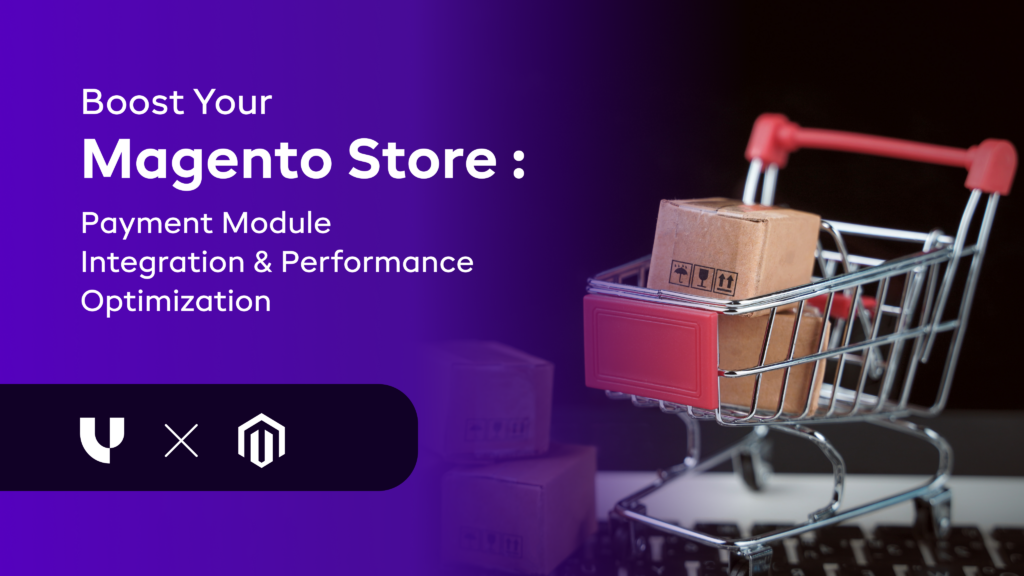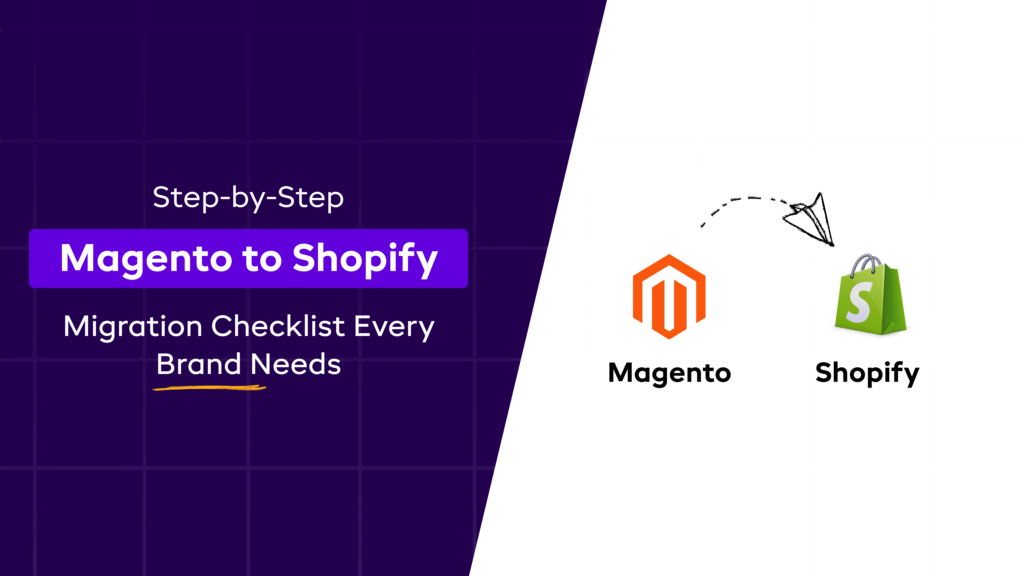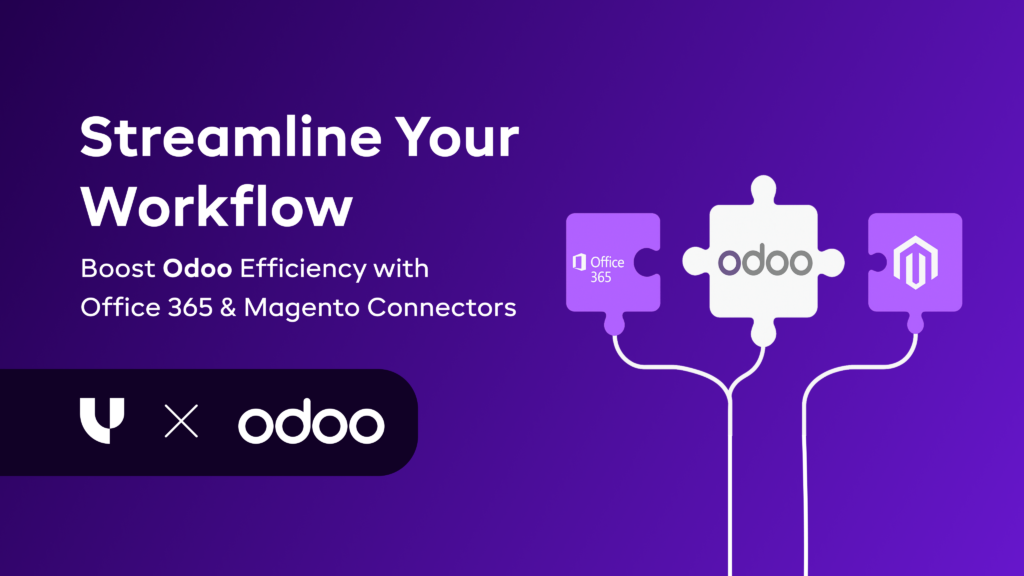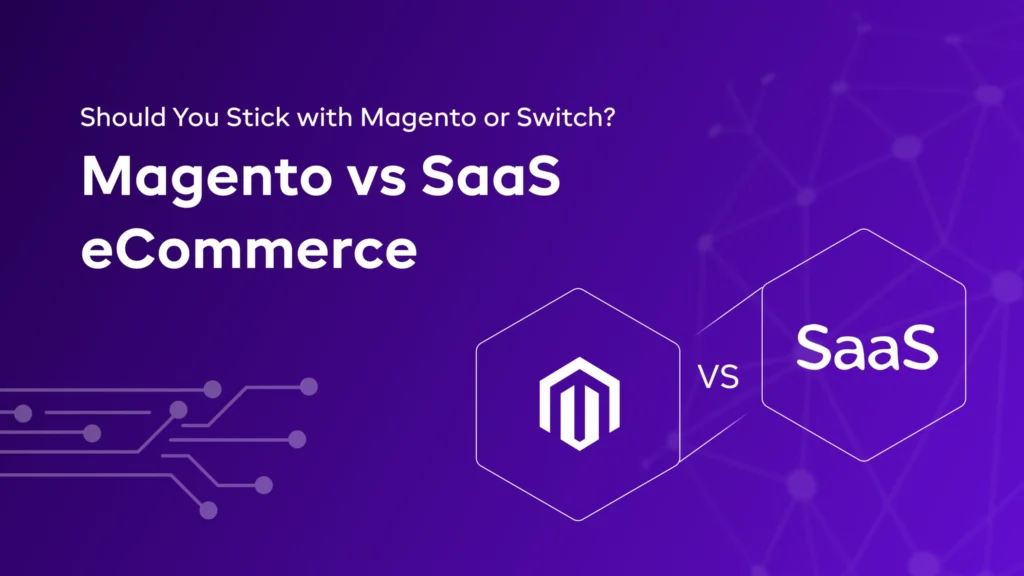Boost Your Magento Store: Payment Module Integration & Performance Optimization
Published on July 16th 2025

Introduction
Optimizing their Magento store is one of the most common aspects that many store owners overlook!
While it might sound normal, it’s not.
Performance optimization is a key aspect of running your online operations. In other words, having a faster website means better loading and checkout speed, higher conversion rate, and improved revenue, along with greater customer satisfaction.
Sadly, despite the value of optimizations, many store owners miss out on the opportunity to improve their sales and operations. Therefore, this guide takes a closer look at the different aspects of boosting your Magento store via payment modules and performance optimization. Let’s get started.
Magento’s Role in Supporting Payment Gateways -H2
1. Native Integration
Magento accepts payments using providers such as PayPal and Braintree. This built-in capability enables retailers to accept credit cards and other payment methods. A small store, for example, may utilize Braintree to accept credit card payments as well as PayPal. This native integration guarantees that Magento payments are processed securely and simply. It supports both businesses and customers.
2. Extension Installation
Merchants can add additional payment gateway extensions from the Magento Marketplace. For example, a company may easily integrate Stripe or 2Checkout via the Marketplace. They can also set up supported billing gateways from third-party payment gateway providers.
A foreign shop might utilize Amazon Pay to reach more customers. The flexibility enables firms to accept a variety of payment methods and cater to client preferences.
3. Configuration
Magento 2's admin panel makes it simple to establish several payment methods. Merchants may set up their preferred payment gateway by navigating to settings > sales > payment. For example, a fashion retailer can set up credit and debit cards. They can accept Amazon payments and PayPal. The easy setup enables businesses to build their payment system easily.
4. Gateway Selection
Magento allows retailers to provide many payment gateway alternatives. Customers can select their preferred method at checkout. For example, an electronics business may accept credit cards and Amazon Pay. It provides clients with extra payment options. The flexibility boosts conversion rates and enhances the entire payment experience.
5. Flexibility and Backup
Using several payment portal providers provides more flexibility and backup in case one gateway fails. For example, suppose the credit card payment provider goes down. Having another eCommerce payment channel allows transactions to continue. It is especially critical during peak periods such as Black Friday. Having many payment channels helps the firm function smoothly. Besides, if you’re confused about how to proceed, it’s best to connect with Magento development companies for better execution.
Payment Gateway Integration Types Used in Magento
How do you install a payment gateway on your Magento website? There are three main options: built-in payment systems, third-party extensions, and bespoke integration.
Build-in
Magento offers three built-in payment gateways: Authorize.Net, PayPal, and Braintree. All of them are very reputable payment providers with top-tier security features. You may enable and configure them immediately after installing Magento Adobe Commerce; no further software add-ons are needed.
All options are intuitive and straightforward to set up in the admin panel to establish a simple payment flow in your Magento business.
Best for:
- Small e-commerce businesses
- Simple default store infrastructure
- Standard purchase process
3rd party extensions
If you want to accept payments in many countries and regions, you may buy payment gateway extensions. Magento payment extensions such as Stripe and Paya are popular in the US market, as are Barclaycard and Worldpay in the UK, Moneris in Canada, and Alipay in China.
Ideal for:
- Mid-sized Magento shops.
- Regional Payment Providers
- More flexible and diversified payments
Want to start a project with us?
Empowering businesses to achieve greatness through strategic guidance and innovative solutions.
Book A Demo
Steps to Integrate Payment Gateway into Magento
Before Integration
Ensure Magento is installed on your local development environment and compatible with the appropriate PHP version and extensions. Misconfigured server settings might cause Magento 2 to fail or function poorly.
Integrating a payment gateway into your Magento store is crucial for offering a smooth and secure checkout experience. Whether you’re using Magento Open Source or Adobe Commerce (formerly Magento Enterprise), the steps are generally similar.
Here’s a detailed breakdown of the process to help you integrate a payment gateway confidently and efficiently.
1. Choose the Right Payment Gateway
Before diving into integration, evaluate the payment gateway that best fits your business needs. Popular options for Magento include:
- PayPal
- Stripe
- Authorize.Net
- Razorpay
- Square
- Braintree
Consider factors like transaction fees, regional availability, supported currencies, fraud protection, mobile compatibility, and ease of integration. Besides, if you’re outsourcing, you must understand the different aspects involved in Magento development services.
2. Create a Merchant Account
Once you've selected a gateway, sign up for a merchant account with the provider. This account enables you to process online payments and access dashboards, analytics, and payout reports. Keep credentials like API keys or client IDs ready for the integration phase.
Magento offers a marketplace filled with official and third-party extensions. Most major gateways offer dedicated Magento 2 modules. Follow these steps:
Go to the Magento Marketplace (https://marketplace.magento.com).
Search for your payment gateway's extension.
Verify it's compatible with your Magento version.
Install it using Composer or upload it manually via FTP if needed.
After installation, run the following CLI commands in your Magento root directory:
bash
Copy
Edit
php bin/magento setup:upgrade
php bin/magento cache:flush
php bin/magento setup:di:compile
This ensures the extension is properly registered and available in your admin panel.
4. Configure Payment Gateway Settings in Magento Admin
Once installed, navigate to your Magento Admin panel:
- Go to Stores > Configuration > Sales > Payment Methods
- Locate your payment gateway in the list.
- Enter the required credentials (e.g., API key, secret key, merchant ID).
- Enable sandbox mode for testing before going live.
Set preferences such as:
- Accepted card types
- Payment title on checkout
- Payment from specific countries
- Order status after payment
Ensure test credentials are working correctly by placing dummy orders.
5. Enable HTTPS and PCI Compliance
Your Magento store must run on HTTPS for secure payment data transmission. Make sure your SSL certificate is installed and active.
In addition:
- Use Magento's built-in PCI compliance tools.
- Consider adding a Content Security Policy (CSP) to restrict unauthorized scripts.
- Implement reCAPTCHA and 2FA to protect against bot attacks.
6. Test the Payment Workflow Thoroughly
Before going live:
- Use the gateway’s test card numbers and credentials.
- Validate successful and failed transactions.
- Check for refund functionality.
- Confirm that order statuses update correctly in Magento.
Ensure the success page, transactional emails, and webhook callbacks are functioning.
7. Go Live and Monitor
After successful testing:-
Switch from sandbox to live mode.
-
Monitor transaction logs regularly.
-
Set up alerts in your payment dashboard for failed payments, chargebacks, or suspicious activity.
After successful testing:
- Switch from sandbox to live mode.
- Monitor transaction logs regularly.
- Set up alerts in your payment dashboard for failed payments, chargebacks, or suspicious activity.
Proper payment integration is more than a technical step; it directly affects your conversion rate, customer trust, and compliance. By following the steps above, you ensure a seamless and secure checkout experience tailored to your Magento store.
Takeaway for Performance Optimization in Magento
1. Update to the latest version of Magento
One of the first actions you can take to improve Magento 2 performance is to update it on a regular basis. New updates occur every three months and include numerous new features, bug fixes, platform advancements, and speed improvements.
You should not ignore it and continue to use older versions, since this could eventually cause serious problems. To guarantee that your website runs quickly and efficiently, get the most recent Magento version and update it regularly.
2. Change hosting provider
Magento is a complicated platform with specific system requirements to perform effectively. The minimum requirements are 2GB of RAM and SSL. However, it will vary based on your website's requirements.
You may select a shared hosting plan that is ideal for beginners. However, do not anticipate a fast website loading speed with shared hosting or the cheapest hosting package with low resources.
3. Audit third-party extensions
Merchants use Magento extensions to stay current with trends and differentiate themselves from the competition. While they can help with some tasks, they can also use a lot of resources and slow down your website's page load speed.
The ideal option is to do a frequent audit of your extensions to identify the "problem" that may be optimized or removed.
4. Use lightweight Magento themes
You may be surprised to learn that your website's theme could be slowing it down, especially if it contains a large number of custom blocks, widgets, and sliders. Just imagine how long it will take to load all of them.
So, it is horrible for website visitors with fast internet connections and a nightmare for those with sluggish internet. It not only creates a negative client experience but can also impact other Magento features, exacerbating the problem.
5. Delete unnecessary fonts
When you want to improve your clients' experience, you experiment with a variety of contemporary styles, themes, and fonts. Even if the last option is not utilized, it might slow down page loading.
Sometimes you add custom fonts to the section of the page configuration file and forget about them. Whether or not the typeface is used, it remains loaded.
Conclusion
Ready to innovate your operations with experts who understand? Let our expert help you with Magento payment module integration services today!

About Author


